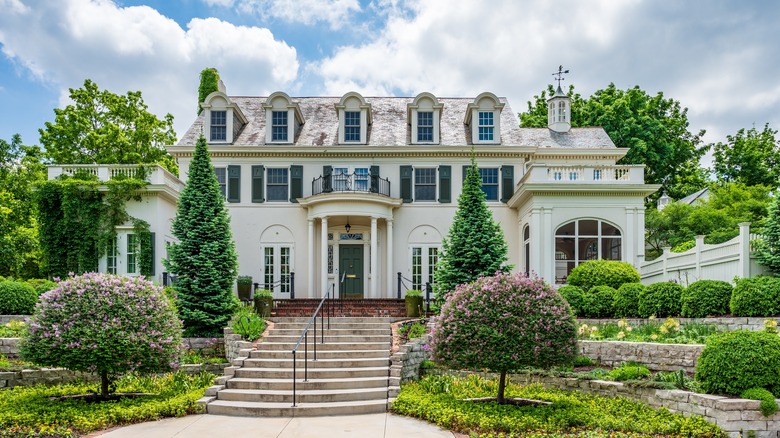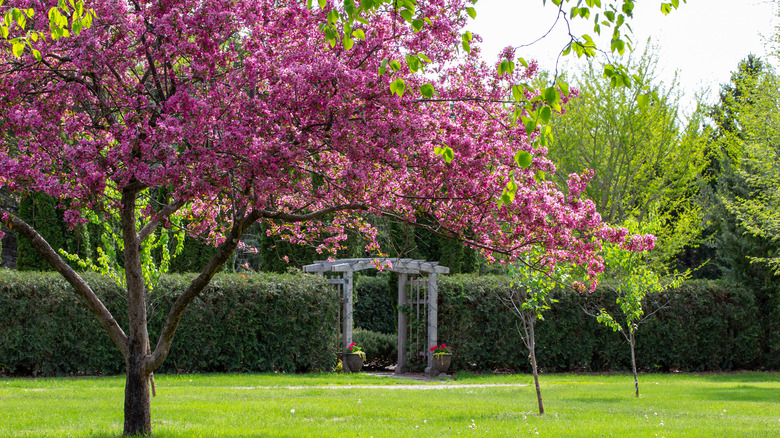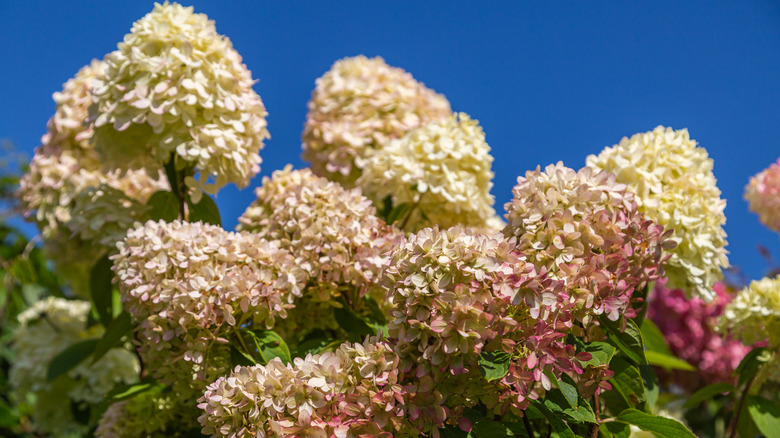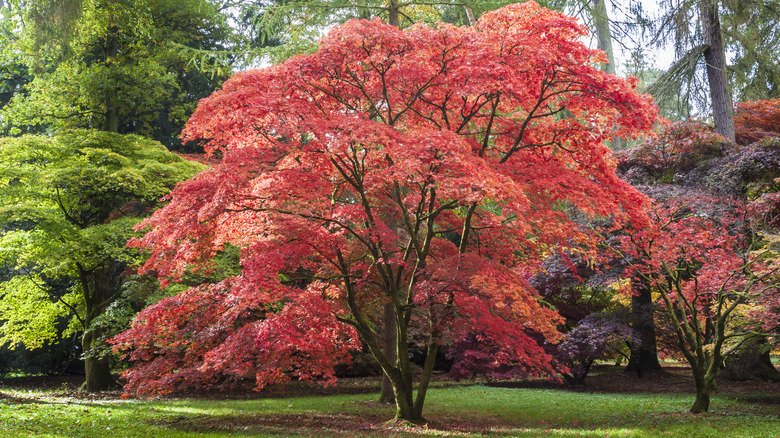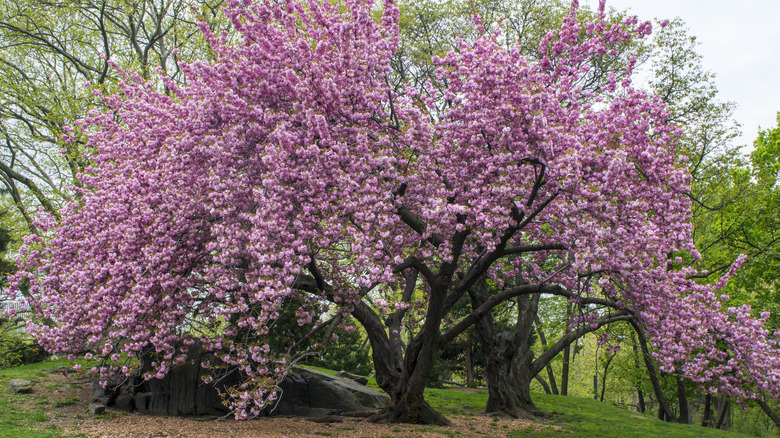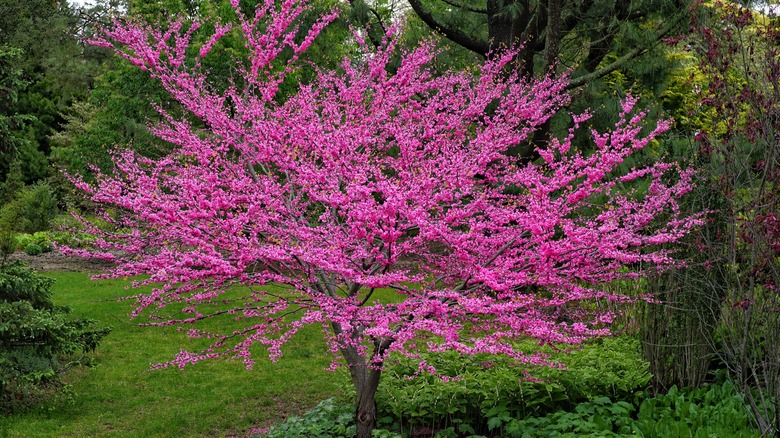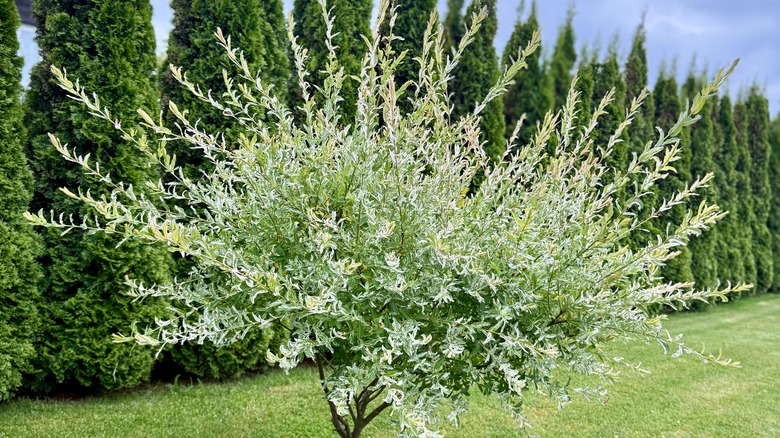8 Small Trees That Have Big Curb Appeal
Whether you're thinking of selling your home or just want to make a good first impression with visitors, curb appeal is essential. A lot of factors, from your house's paint to your choice in exterior lighting, impact your home's curb appeal, but one of the biggest factors is your home's landscaping. Planting small and easy to maintain trees in your front yard can massively increase your home's wow factor and in some cases could even make your home worth more money when selling.
Of course not all trees are created equally. Few people want a home with an invasive 'Bradford' or 'Cleveland' pear in the front yard. Taller trees that require significant space and could threaten power lines also aren't ideal for most smaller front yards. Instead, opting for smaller noninvasive or native trees that won't take over your yard or garden, while still adding beauty and not creating too much mess, are an ideal way to boost your curb appeal.
Crabapple trees bring blooms and beauty to landscapes
Thanks to their stunning flowers and a size that seldom exceeds 25 feet tall and 20 feet wide, crabapples (Malus spp.) are go-to trees for adding beauty and curb appeal in small spaces. While some can be a bit messy and drop fruits, opting for a cultivar like 'Adams' or 'David' – which have persistent fruits that stay on the tree — easily solves this problem. Hardy in USDA Hardiness Zones 3 through 7, crabapples thrive in sunny spots with well-draining soil.
Panicle hydrangeas offer massive flowers and winter interest
While hydrangeas are often thought of as shrubs instead of trees, that doesn't have to be the case with panicle hydrangeas. With a size that can reach around 25 feet tall and wide, these hydrangeas make a big impact thanks to their massive panicle blooms. These flowers aren't just beautiful during summer and fall. They also provide winter interest. Hardy in zones 3 through 8, panicle hydrangeas thrive in full to part sun and are tolerant of a range of soils as long as they have good drainage.
Japanese maples bring elegance and charm to small yards
With their elegant leaves and graceful forms, Japanese maples (Acer palmatum) make a big impact despite their short stature of only 25 feet or less. While their helicopter-like seeds can be messy, the trees make up for it with their range of leaf colors that can bring beauty to landscapes in both summer and autumn. Hardy in zones 5 through 8, Japanese maple trees thrive in part sun. Some varieties can tolerate full-sun, but it is mainly in soft, nothern light, not harsh southern sun.
Dwarf blue spruce trees bring beauty to wintery yards
Full sized blue spruce trees (Picea pungens) can easily reach 60 feet, making them a poor fit for small yards, but luckily dwarf blue spruces are available. Cultivars like 'Fat Albert' have all the beauty of a blue spruce but only reach about 15 feet tall by 10 feet wide. Hardy in zones 2 through 8, this diminutive spruce adds winter interest to yards and thrives in full sun locations. Be sure to plant your dwarf blue spruce in moist and well-draining soil.
Japanese flowering cherries add a magical touch to spring yards
With their stunning spring blooms and size of only around 25 feet tall and wide, Japanese flowering cherry trees (Prunus serrulata) can add a huge wow factor to yards. Hardy in zones 5 through 8, these beautiful trees thrive in soil that is well draining and moist and require full to part sun. Regardless of what tree shapes you prefer, from weeping to upright forms, there's a flowering cherry tree that is perfect for your taste.
Eastern redbud trees are North American natives with big blooms
Native to eastern and central North America, eastern redbuds (Cercis canadensis) rarely grow larger than 30 feet tall and 35 feet wide. They bloom in early spring with bright pink, purple, or red blooms and are a huge hit with bees and butterflies. Hardy in zones 4 through 9, eastern redbuds thrive in full sun, though they can also handle part shade. Avoid planting them in soil that is prone to becoming waterlogged.
Flowering dogwoods bring weeks of blooms to yards and gardens
Native to eastern North America and hardy in zones 5 through 9, flowering dogwoods (Cornus florida) make a big impact despite their relatively small size of around 25 feet tall and wide. The weeks-long white blooms of these native flowering trees in spring are matched only by the beautiful red color the trees' leaves turn in fall. Flowering dogwoods generally grow best in full sun to part shade, though they tend to grow significantly taller when grown in full shade.
Dappled willows can add color to areas with poor drainage
It can be challenging to find trees that grow well in areas with wet soil. Luckily, that's not an issue with the dappled willow (Salix integra 'Hakuro Nishiki'). This small tree rarely grows past 20 feet tall and is a great option for spots with poor drainage. Hardy in zones 5 through 8, dappled willows thrive in full to part sun. Thanks to their pink spring foliage, they add a beautiful pop of color to landscapes early in the season. They also offer winter interest due to their red branches.
